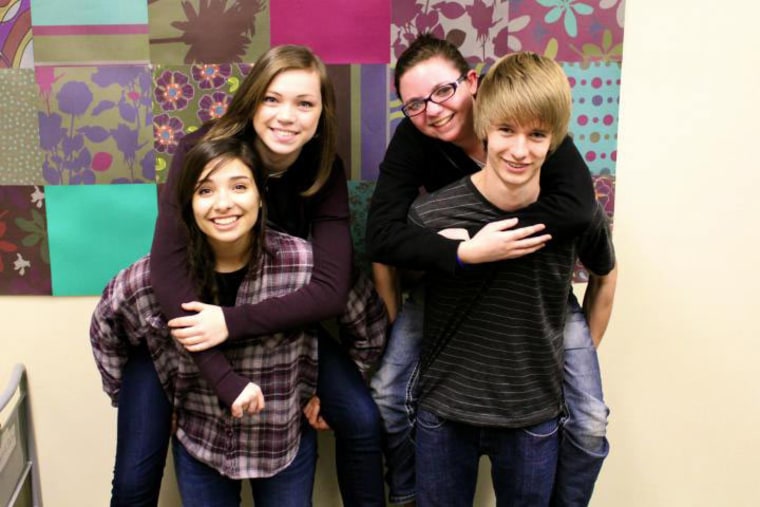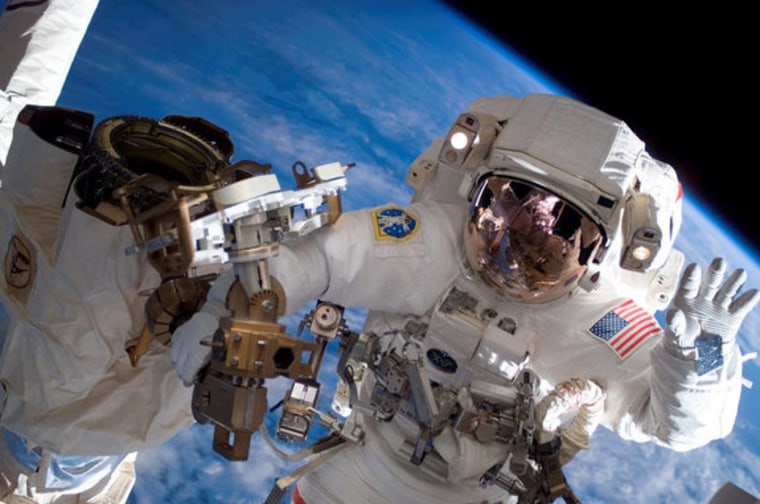An old NASA idea for keeping astronauts cool could finally become reality. U.S. high school students recently won $5,000 to make spacesuit undergarments using materials that can absorb heat without changing temperature.
Today's NASA astronauts must wear stretchy underwear with 300 feet of tubes carrying chilled water to avoid overheating during long spacewalks. The students from West Salem High School in Oregon proposed making lighter undergarments by using phase-changing crystals — materials that are able to stay the same temperature during phase changes (such as solid ice melting into liquid water).
"If you stitch phase-changing crystals into clothing, you could also design phase-changing crystals to only change at a certain temperature," said Michael Lampert, a physics teacher at West Salem High School and coach of the "Infinity" student team. "You could go on a spacewalk and not have the problem of carrying a liquid-cooled ventilation system."

The team's "Infinity Suit" represented one of four winning ideas out of 15 finalists at the Spirit of Innovation Challenge hosted by the Conrad Foundation at the NASA Ames Research Center in California from March 29 to March 31. Judges awarded $5,000 to each winning team of student entrepreneurs to turn their ideas for space exploration, clean energy, and health and nutrition into real prototypes.
The Conrad Foundation — a nonprofit founded by the wife of Apollo astronaut Pete Conrad — is backed by NASA and other government agencies.
Infinity's idea came from founding member Grace Hannon, a student who was inspired by the thought of making better blankets for hospital patients. She ended up calling Barbara Morgan, a teacher and former U.S. astronaut, to discuss health problems for astronauts and the spacesuit overheating issue.
Hannon and her three fellow students proposed the phase-changing crystals as a way of keeping astronaut temperatures steady, but also wanted a way to get rid of body heat building up inside the crystals. They plan to eventually add Peltier chips that heat up on one side and cool down on the other side when electricity runs through them.
"NASA tried this way back, but they weren't using Peltier chips as well as they're doing now," Lampert told InnovationNewsDaily. "It's sort of an old technology brought back."
The Infinity team has only showed a small fabric patch with phase-changing crystals at the Spirit of Innovation Challenge, but the students seem more excited than ever even after the competition. Fresh off their win, they immediately sat down in a group to plan out their agenda for the months ahead — and they have already made contact with a NASA researcher.
Schools need more of such entrepreneurial contests to help keep U.S. students keen on tackling careers in science, technology and engineering, Lampert said.
"I could see the light bulb go off in their eyes," Lampert said. "They got inspired when they came back from their trip to San Francisco with $5,000 in their pocket — they're going to try prototyping their invention and make something real."
Follow InnovationNewsDaily on Twitter @, or on Facebook.
